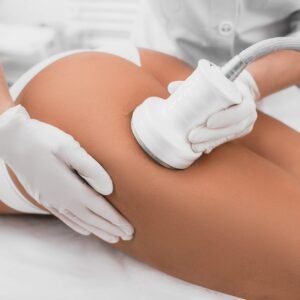Cellulite Reduction
What is cellulite?
The skin, fat and muscles in your body are built up in layers. The skin is attached to the muscle below by fibrous bands of connective tissue. If this connective tissue breaks down it allows fat cells to push up into the skin layer. This creates the uneven, bumpy “orange peel” texture known as cellulite.
Causes of cellulite
Some people are more prone to develop cellulite than others, so what factors determine if you are likely to suffer with cellulite?
- Gender: Men’s connective tissue lies in a crisscross pattern which is good at holding fat cells down. Women have vertical bands of connective tissue that are more likely to allow fat cells to bulge toward the surface of the skin.
- Age: As people get older, their skin is less elastic and connective tissue bands become weaker, so the fat cells bulge up more easily.
- Hormones: The hormone estrogen plays a part in the build-up of fatty deposits and cellulite. Women produce more estrogen than men, so it may be another reason why women have more cellulite. It may also explain why cellulite first appears after puberty and can get worse during pregnancy.
- Genetics: Genes control how the body stores fat and so influence the formation of cellulite.
- Diet: A diet that causes the body to store food as fat can increase the likelihood of developing cellulite.
- Lifestyle: Lack of exercise and drinking too much alcohol can affect the way fat cells are formed and deposited throughout the body.
Cellulite Reduction: Localised Fat Modelling
Cellulite is extremely difficult to remove and most treatments concentrate on prevention, using methods like massaging oil or lotion into areas prone to cellulite build-up.
Once cellulite deposits have formed, liposuction is generally thought to be the most effective method of removing it. But liposuction requires expensive surgery, under a general anaesthetic, causes in scaring where the suction cannulae (needles) pierce the skin and in some cases can result in post-operative inflammation.
One alternative to surgery is localised fat modelling. This is a completely non-invasive technique which leaves no scars at all on the patient. As it does not involve surgery, no anaesthetic is needed which can be advantageous for patients that react to anaesthetics or that have other medical conditions which may increase the risks associated with general anaesthesia. It is also less costly than surgery.
Localised fat modelling involves a series of sessions of very vigorous and intensive massage. This massage breaks down the fatty deposits under the skin and redistributes the fat more evenly which reduces or completely eliminates the lumpy appearance of cellulite.
